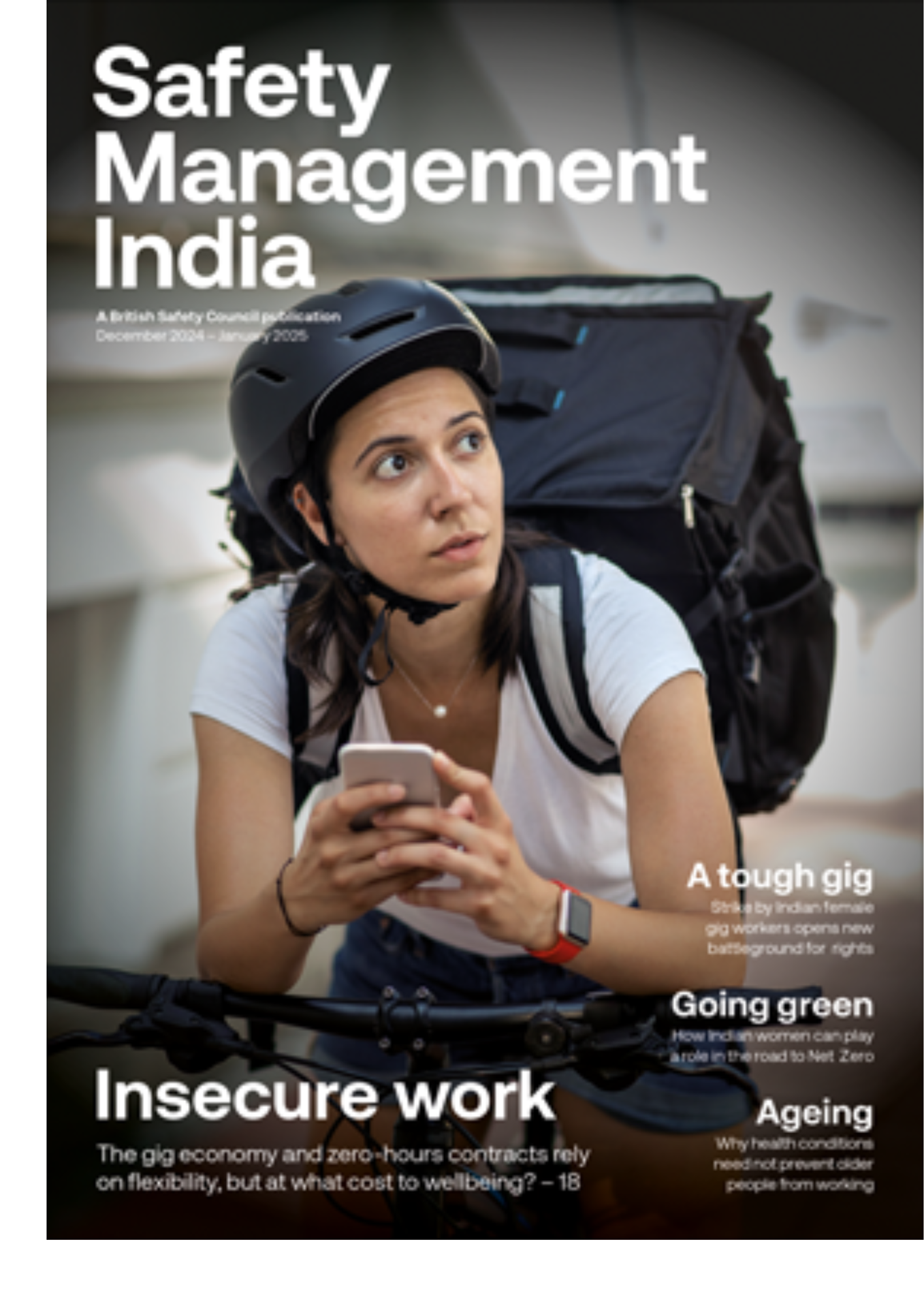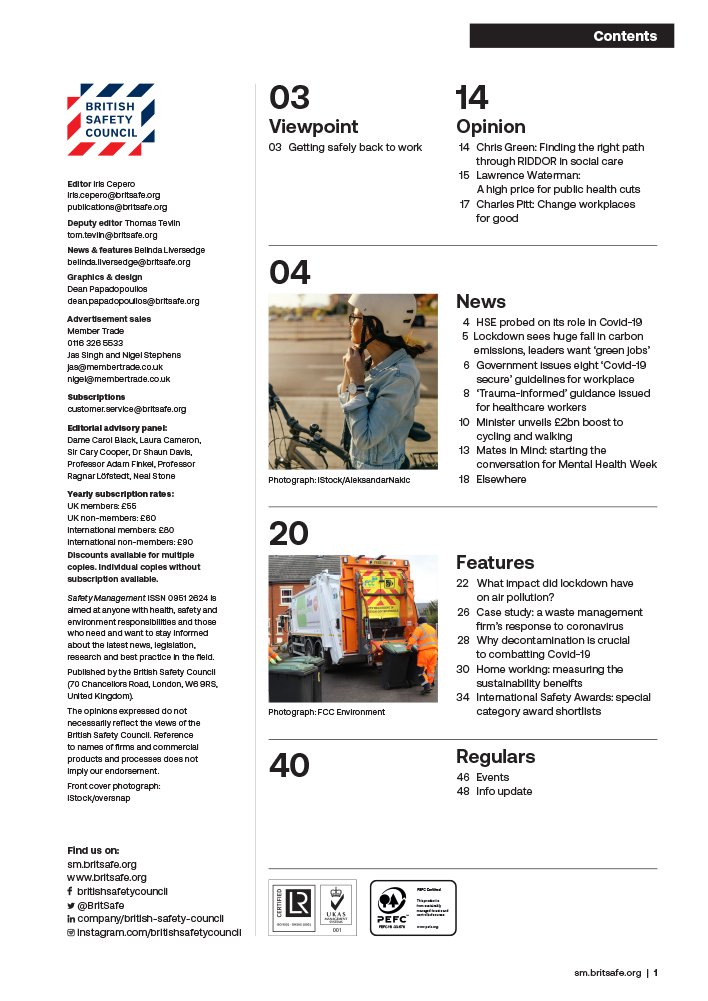Employee expectations around the nature and organisation of office, home and hybrid working have changed significantly in recent years, making it more important than ever for employers to rethink and update their approaches to flexible working, ergonomics and workplace design, to better support employee wellbeing, motivation and job satisfaction.
Features
Adaptability, ergonomics and wellbeing: building blocks for the workplace in 2025
The traditional workplace has undergone a seismic shift since the pandemic, challenging historically entrenched norms about how, where and when we work.
This transformation demands that organisations rethink their approach to employee wellbeing, ergonomics and workplace culture. Drawing on recent findings, including the 2024 Neurodiversity in Business (NiB) report, this article highlights the need to move away from outdated, inflexible work practices and the need for organisations to embrace modern hybrid systems that can enhance employee satisfaction, develop inclusivity and power organisational success.
 Photograph: iStock/martin-dm
Photograph: iStock/martin-dm
The rigid 9-to-5 office culture no longer aligns with modern workforce needs and societal demands. Smart working models have proven their value in cultivating creativity and productivity, yet resistance and fear of change persist. The belief that work must happen exclusively within office walls during standard hours belongs to a bygone era. Employees now expect flexibility, and studies demonstrate that ‘smart working’ arrangements reduce stress, improve work–life balance, and enhance job satisfaction. Research by Charalampous et al. (2019) highlights how employees with flexible work options report higher engagement and lower turnover intentions.
The big call for RTO
The case of Amazon’s return-to-office mandate prompted a strong, widespread employee backlash. Subsequently, a survey conducted by HR Grapevine (2024) revealed that 73 per cent of Amazon’s corporate staff are contemplating a job switch due to the new return-to-office mandate, with 91 per cent expressing dissatisfaction. This underscores the need for adaptive leadership, which listens to and acts upon the needs of its employees. By embracing flexibility, organisations empower employees to perform at their best while addressing diverse needs – from caregiving responsibilities to neurodivergent and neurotypical work preferences.
However, implementing smart working requires a cultural shift. Organisations must redefine productivity, moving away from traditional metrics tied to physical presence and focusing instead on outcomes. This re-orientation not only boosts morale but also reduces the stigma surrounding non-linear work patterns. Leaders are pivotal in driving this change, developing trust, and empowering employees through autonomy, structured systems and clear communication. Evidence suggests that such measures create an engaged and loyal workforce, which is vital in today’s competitive talent landscape.
A report by the Edge Foundation (2024) highlights that the UK is facing a skills shortage and a productivity problem. In such a competitive recruitment environment, a business has to be an attractive proposition if it wants to recruit the best.
The devaluing of ergonomics
Ergonomics has historically been treated as an afterthought, yet its importance is undeniable. Poor ergonomics, particularly in home-based set-ups, contributes to musculoskeletal issues and impacts mental wellbeing. The pandemic’s rapid shift to remote work revealed a stark contrast: while home workers enjoyed the comforts of personalised spaces, many lacked adequate ergonomic support. If anything, the situation has deteriorated recently, with many employers failing to provide adequate ergonomics support for homeworkers.
The hybrid working model further complicates this landscape, exposing gaps in organisational support. For instance, uninformed or untrained workers often resort to purchasing inferior ergonomics products online, which pose long-term health risks, as noted by Hedge (2020). A quick search on Amazon for an ‘office chair’ will show that every available chair is classed as ‘ergonomic’!
When represented in online product descriptions, the word ‘ergonomic’ has been devalued to the extent that it is rendered meaningless. Yet the untrained have no method by which to measure the accuracy of the description. Organisations must value ergonomics in all work environments, embedding it into their operational ethos to ensure employees are comfortable both in and out of the office. How many millions of employees are still working at home from a kitchen table, sofa, or their bed? Even a dining table and chair have the wrong height ratios for computer work so neck and shoulder discomfort is commonplace.
Organisations must educate employees on the importance of ergonomics, offering resources and training to ensure safe and effective workspace set-ups. These proactive measures mitigate health risks and underscore an organisation’s commitment to employee wellbeing.
The new workforce for 2030
Looking ahead, Gen Z and Millennials, who will comprise 70 per cent of the workforce by 2030 (Deloitte, 2018), demand environments that reflect their values of wellbeing and inclusivity. It’s more important now than ever for companies to evolve and adapt to retain top talent. Biophilic design, which integrates natural elements into workspaces, is a forward-looking solution and embodies sustainability.
The study completed by Deloitte (2018) goes further, identifying Gen Z and millennials as particularly concerned about environmental sustainability. Their collective view is that businesses are not doing enough to prioritise environmental protection over profits. 83 per cent of Gen Z and 80 per cent of millennials surveyed indicated that business success should be measured by more than just financial performance but also by contributions to society, including environmental sustainability.
 'Willo' trees. Photograph: Osmond Ergonomics
'Willo' trees. Photograph: Osmond Ergonomics
Innovations like the 3D-printed ‘Willo’ trees made from recycled materials, which our company showcased at the Biophilic Design Conference (pictured above), demonstrate how design can create functional and emotionally restorative spaces. Beyond aesthetics, these principles align with a growing emphasis on sustainability and environmental responsibility, which are particularly important to younger generations.
Biophilic design goes beyond visual appeal. Studies by Kellert (2018) suggest that incorporating natural elements into the workplace reduces stress, enhances cognitive function and cultivates creativity.
For neurodivergent and neurotypical employees, these environments can alleviate sensory challenges, enabling them to contribute fully to their roles. Moreover, integrating sustainability into workplace design resonates with employees who, as we have identified, prioritise environmental stewardship, creating a sense of shared purpose and alignment with organisational values.
Hybrid working’s place in the modern workplace
Hybrid work models, although widely promoted, often fail in execution. Hybrid work risks becoming a hollow promise without proper investment in equipment, training, technology and support.
The 2024 NiB report highlights the necessity of providing tailored adjustments for employees in the workplace and at home, including professional assessments, to ensure equity and functionality.
Many organisations now partially address this through online DSE (Display Screen Equipment) and other assessment processes but, if these are not properly supported and acted upon, a partial fix can easily lead to escalating problems which require further intervention by external specialists.
Furthermore, organisations must invest in technology and training that facilitate seamless collaboration across physical and virtual spaces. Felstead and Reuschke (2021) emphasise that effective hybrid working requires more than policy; it demands strategic implementation to build trust and engagement within teams, further enhancing employee retention. This is made ever more apparent in today’s landscape, where the average lifespan of an S&P 500 company was 76 years in 1943 but this has dropped to 15 years in 2023 (EY, 2023).
Building a successful hybrid work model also requires addressing communication barriers. Virtual meetings, while convenient, can reinforce feelings of disconnection. Regular check-ins and collaborative platforms that encourage spontaneous interaction can bridge this gap. Leaders must prioritise inclusivity in hybrid setups, ensuring external employees are not sidelined in discussions or decision-making processes.
These efforts help grow a cohesive and equitable work culture, essential for long-term success.
Outdated practices and burnout
Burnout remains a pervasive issue in high-pressure environments. Organisations focused solely on performance metrics risk creating cultures that exacerbate disengagement and increase staff turnover.
To address this, businesses must prioritise holistic wellbeing. The 2024 NiB report underscores the link between psychological safety and performance, noting that reduced psychological safety correlates with diminished innovation and career satisfaction among neurodivergent employees. Tailored wellbeing initiatives, particularly those addressing sensory overload and promoting work–life balance, are essential for sustainable success. Embedding these principles into leadership training, team practices and organisational policies creates a culture of care that promotes both individual and organisational resilience for both neurodivergent and neurotypical employees.
Moreover, recognising the signs of burnout and addressing them proactively can transform workplace dynamics. Training managers to identify and mitigate stressors, coupled with robust mental health support systems, ensures employees feel valued and supported. Flexible working hours and clear boundaries between professional and personal time further reduce burnout risks, contributing to a healthier, happier and more engaged workforce.
Workplaces of the future
The office of the future must cater to diverse needs, leveraging design to champion inclusivity and productivity. Emerging trends in workplace design reveal a shift towards spaces that resemble hotel lobbies, blending functionality with comfort. This approach enhances employee satisfaction and aligns with Gen Z’s and millennials’ environmental values.
Biophilic principles, as championed by Kellert (2018), offer dual benefits: improving employee mood and contributing to a healthier planet. Leadership is critical in championing these inclusive practices, demonstrating commitment through action and policy. Investing in neuroinclusive strategies, such as universal design principles and tailored adjustments, ensures equity for all employees, enabling them to reach their full potential and subsequently support their organisation in achieving corporate aims.
Workplace design must also account for the evolving nature of teamwork. Collaborative zones, quiet areas for focused work, and wellness spaces that promote relaxation are becoming standard features. These spaces address the diverse needs of employees, promoting creativity and reducing stress. Incorporating employee feedback into the design process further ensures that workplaces reflect the preferences and requirements of their users, strengthening engagement and loyalty.
The workplace stands at a crossroads. Organisations that cling to outdated models risk alienating talent, while those that embrace flexibility, ergonomics, and wellbeing will unlock their workforce’s full potential. As we strive for a more inclusive future, these principles serve as a roadmap for creating environments where every individual can succeed.
Guy Osmond is managing director at Osmond Ergonomics and Alex Reffell is inclusive wellbeing services operations manager at Osmond Inclusive Wellbeing Services.
For more information see:
T: +44 (0)345 345 0898
References
Biron, M., Karanika-Murray, M., & Cooper, C. L. (2021). Improving organizational interventions for stress and well-being: Addressing process and context. Routledge.
Charalampous, M., Grant, C. A., Tramontano, C., & Michailidis, E. (2019). Systematically reviewing remote e-working and its effects on employees: A meta-analysis. European Journal of Work and Organizational Psychology, 28(1), 51-73.
Deloitte. (2018). Millennial survey report. Deloitte Insights.
Edge Foundation (2024). Skills shortages in the UK economy.
EY (2023). How businesses can stand the test of time.
Felstead, A., & Reuschke, D. (2021). Homeworking in the UK: Before and during the 2020 lockdown. Centre for Research on Learning and Life Chances (LLAKES) Research Paper.
Hedge, A. (2020). Ergonomics and home office workstations: Emerging issues and challenges. Journal of Ergonomics, 3(1), 12-20.
HR Grapevine. (2024). ‘Strongly dissatisfied’ | Amazon employees looking for the exit after back-to-office mandate.
Kellert, S. R. (2018). Nature by design: The practice of biophilic design. Yale University Press.
Neurodiversity in Business (NiB). (2024). Neurodiversity in Business and Work Report 2024.



